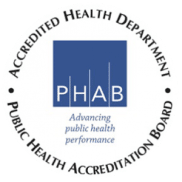What is infant mortality?
Infant mortality is a statistic that looks at the number of babies who die each year before they reach their first birthday. It is usually calculated as the number of babies who die out of every 1,000 babies who are born alive in a year. Infant mortality can be divided into neonatal mortality and post-neonatal mortality. When newborn babies die less than 28 days after they are born, it is called neonatal mortality. When babies die, who are older than 27 days but younger that one year, it is called post-neonatal mortality. Neonatal and post-neonatal mortality often have different causes, so it can be helpful to look at them one by one.
Why is infant mortality a public health problem?
The death of a baby is a tragedy for any family. It is also a tragedy for the people in an area, because a baby’s death means that the good the child could have brought to the community during his or her life has been lost.
High infant mortality also means that there are public health problems in the community that need to be addressed. So, it is important to see what problems cause a community to have a high infant mortality rate so that people and organizations can work together to solve those problems and protect the health of the next generation.
How big is the problem of infant mortality?
In 2014, 290 babies died in Arkansas before their first birthday. The infant mortality rate for that year was 7.5 deaths per 1,000 live births. The U.S. infant mortality rate for 2014 was 5.8. Arkansas’s neonatal mortality rate was 4.5 per 1,000 live births, and the post-neonatal mortality rate was 3.0 per 1,000 live births. Arkansas’s neonatal mortality rate was slightly higher than the U.S. neonatal mortality rate, which was 3.9. The post-neonatal mortality rate for Arkansas was also higher than the U.S. post-neonatal mortality rate, which was 1.9.
HRSA/MCH Infant Mortality Reduction Activities in Arkansas
The 2014 Infant Mortality Rate was 7.5. A 15% decrease over a decade and a half. This gives Arkansas the 6th highest IM Rate in the nation.
Causes of infant mortality are many and the subject of infant mortality reduction is very broad. Efforts to reduce infant mortality can be very clinical in nature and others may focus more on behavior. The Arkansas Department of Health (ADH) and especially the Family Health Branch’s work to reduce infant mortality take many forms and often have multiple purposes. The Family Health Branch Chief serves as the MCH Director for the state and the following activities are either under his direction or where Branch staff are contributing participants.
- Providing maternity clinics around the state
- Providing family planning clinics around the state to address birth spacing
- Providing Newborn Screening
- Supporting the Infant and Child Death Review, to better understand the unexplained causes
- Providing evidenced based home visiting services around the state for young at risk families
- Supporting the Perinatal Regionalization Committee, which works toward Perinatal/NICU Regionalization
- Supporting Sisters United and Brothers United, black sororities and fraternities addressing breastfeeding, safe sleep, and flu shots back in their home communities
- Supporting a Breastfeeding workgroup to promote breastfeeding in the state
- Licensure of Lay Midwives
- Education on the risks of smoking in the home and it’s risks to infant health
- Supporting CoIIN workgroups focusing on safe sleep and reducing pre-term births
- Promoting flu shots for pregnant women
- Educating the public on preventing child maltreatment (shaken baby syndrome, etc.)
- Increasing well woman care (annual preventive medical visit, preconception counseling, prenatal care in first trimester)
Infant Mortality CoIIN, Safe Sleep Learning Network
Accomplishments
37 percent of 40 birthing hospitals and Arkansas Children’s Hospital are certified through Cribs for Kids and 7 more are in review for certification. Two birthing hospitals and ACH are Gold Certified: UAMS, White River Medical Center, and ACH. Safe Sleep education materials are now included with the WIC welcome backpack. Safe Sleep education has been added to ADH’s policy manual.
Here is a list of their recommendations.
- Improve our understanding of the causes of infant death in Arkansas.
- Prevent unplanned pregnancies.
- Reduce teen birth rate.
- Prevent low birth-weight and birth defects.
- Promote healthy behaviors among women of child-bearing age, so they will be healthy before they become pregnant.
- Improve health management and parenting skills of parents.
- Expand home visiting and other parent education programs.
- Prevent injuries.
- Increase healthy sleep habits.
- Increase access to quality health care during and after pregnancy.
- Reduce the rate of late pre-term deliveries.
- Improve quality of neonatal hospital care.
- Assure access to high quality health care for babies with special needs.
Improvement by the numbers for Safe Sleep Activities
| Number of Hospitals | Before CoIIN | Success to Date |
| Number of hospitals with written safe sleep policies | 7 | 21 |
| Number of hospitals educating parents on safe sleep | 7 | 21 |
| Number of hospitals formally training staff on safe sleep | 3 | 21 |
| Number of safe sleep certified hospitals | 1 | 13 |
| Stork’s Nest, Sisters, and Brothers United safe sleep educated community volunteers and participants | 42 | Over 400 |
Successful Changes
Change: Hospital Safe Sleep Toolkit
- Completed three PDSA cycles on the toolkit
- In the process of using the toolkit in all birthing hospitals
Change: Hospital Site Visits
- Completed two PDSA cycles
- Number of safe sleep policies and certified hospitals increased after the site visits and hospital interaction has improved
Change: Safe Sleep Education at LHU
- Completed two PDSA cycles.
- Will be ready to spread after all the challenges are addressed and another PDSA is conducted
Health Equity: Steps to Eliminate Disparities
We have acted to improve health equity and eliminate disparities. We have partnered with:
- The ADH Office of Minority Health and Health Disparities
- Brothers United
- Sisters United
- Stork’s Nest
They have community outreach events, prenatal classes, and social media campaigns geared toward high risk populations.
Infant Mortality CoIIN, Pre & Early Term Birth Learning Network
- 52% of birthing hospitals have attained March of Dimes 39+Banners March of Dimes to recognize hospitals that are preventing early elective delivery by implementing a “hard stop” policy and achieving a rate of early elective deliveries at 5% or below.
- 95% of birthing hospitals have “hard stop” policies.
- Team has evaluated Pulaski County’s high preterm birth rate and targeted groups have been identified.
- Successful Changes
- Change: Mini-grand rounds
- Educate hospitals on the dangers of late preterm births
- PDSA cycles to drive improvement
- Number of hospitals that instituted the ‘Hard Stop policy ‘increased
Future Change: Pulaski County initiative ‘Healthy Babies are Worth the Wait’
Ready to spread when:
- Target geographies are identified
- Racial disparities are identified
Perinatal Regionalization Committee
A significant cause of infant mortality is prematurity. In Arkansas as elsewhere, maternal and newborn intensive care for very premature deliveries and births has reduced mortality for those most at risk. However, access to perinatal intensive care services in NICUs (Neonatal Intensive Care Units) is inconsistent and this state lacks formal public policy to address the inconsistencies. Regionalization of NICUs will increase the likelihood that a mother and infant receive risk-appropriate medical care to reduce maternal and infant morbidity and mortality, and to minimize cost. With this in mind, a NICU Regionalization Committee (later renamed the Arkansas Perinatal Regionalization Committee) was created by the Arkansas Department of Health to examine the issue and to make recommendations.
The Plan for Designation
- Completed face to face review of all level IV, IIIa and IIIb
- These will be reviewed again at 3 year intervals
- These need to sign letter attesting to current status annually
- Memorandums of Understanding (MOU) need to be developed for transfers of babies or mothers by all birthing hospitals except level IV
The Future of Regionalization
- Develop quality improvement plan for Arkansas
- Proposed areas of focus
- Develop clinical guidelines for treatment of:
- apnea and bradycardia
- neonatal abstinence syndrome
- Review discharge planning processes
- Monitor discharge mortality and review all death cases of graduates within the first year
- Monitor discharge follow-up for morbidities
Breastfeeding Promotion Workgroup
- Required educational modules for all WIC staff
- Additional training for nurses and nutritionists
- Supplemental training material for use with all staff
- Monthly – Quick Notes on Breastfeeding
- In development – Lunch Notes
- Supports a 24/7 Hotline for breastfeeding questions and consultations.
Arkansas Perinatal Forum
- The Arkansas Perinatal Forum will be supported by the Arkansas Department of Health, utilizing Title V Maternal and Child Health Block Grant funding. Erin Gildner, Project Manager, will work closely with the Maternal and Child Health Director and Forum leaders and participants.
- Mission: Engage key perinatal stakeholders in efforts to optimize perinatal care and health outcomes for women and infants in Arkansas by offering a forum to support the use of data-driven, evidence-based, quality improvement initiatives within the community and health care system.
- Goals:
- Establish a forum website to share data, reports, events, and other valuable information.
- Foster and encourage state-wide continuous quality improvement initiatives to reduce mortality and morbidity in infants and new mothers.
- To search for synergies between groups, which will enable them to accomplish more together by combining resources and avoiding duplication of effort.
- Promote system changes by provider organizations to increase use of evidenced-based clinical practices for obstetric and NICU patients.
- Bring together workgroups to focus on specific infant and mother Maternal Mortality.
- Work groups:
- Newborn Screening – (existing)
- Perinatal/NICU Regionalization – (existing)
- Breastfeeding – (existing)
- Safe Sleep – (existing)
- Pre-term Delivery – (existing)
- Hospital Policy and Practice – (existing)
- Infant and Child Death Review (existing)
- Pre & Inter-Conception Care – (to be added)
- Neonatal Abstinence Syndrome – (to be added)
- Fetal Alcohol Syndrome – (existing)
- Maternal Mortality – (to be added)
- Zika Workgroup (existing)
- Health Equity (to be added)
- Establish and support Operations Committees
- Project Management Workgroups
- Conferences/Meetings
- Data Management
- Reports
- Communication
- Website Management
Infant Mortality Reduction is a primary goal in the MCH Work Plan as well as the ADH Strategic Plan.


